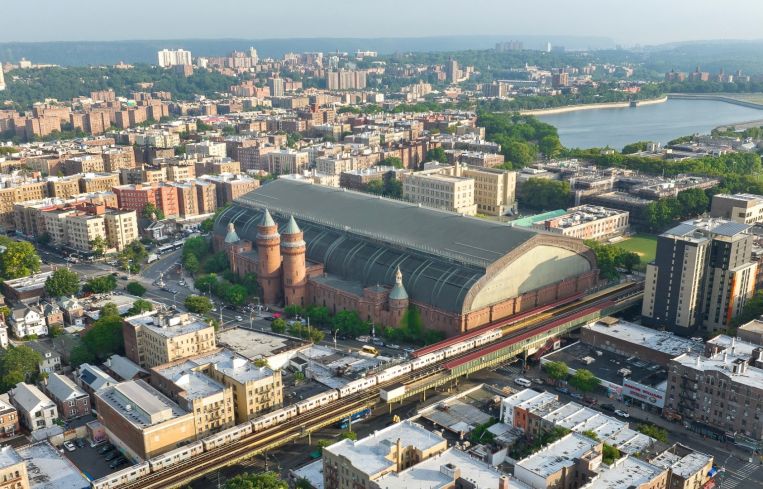How to Kill Jobs, Hurt Communities and Narrow NYC’s Tax Base
By Robert Knakal October 11, 2023 12:00 pm
reprints
Is it finally time that we require candidates for public office to prove that they have passed an Econ 101 class?
Let’s consider the tragic case of the Kingsbridge Armory. The most recent request for proposals has touched a nerve among those who understand economics and the need New York City has to broaden its tax base.
The Kingsbridge Armory is a 575,000-square-foot building at 29 West Kingsbridge Road in the Kingsbridge Section of the Bronx. It is a former military facility occupying an entire square block that was constructed in the Romanesque style between 1912 and 1917. The National Guard gave the armory to the city, and the city designated it a landmark in 1974. The building has been vacant since 1994, producing no tax revenue, no jobs, and providing no benefits to the community.

In 2006, the New York City Economic Development Corporation issued a request for proposals for its sale and redevelopment. After an extensive process, proposals were submitted, and the Related Companies was selected as the developer. Prior to Related’s selection, several community organizations were vocal about wanting to ensure sustainable community-based development. Notwithstanding that these advocates were pushing for a benefits agreement that included several illogical provisions, Related was chosen as the winning bidder in March 2008.
The developer’s concept was to build a retail center that included many beneficial community amenities. In March 2009, the city’s industrial development agency approved $17 million in tax breaks, and City Planning certified the developer’s plans after they successfully made it through the land-use review process in May 2009. The community advocates, backed by almost all public officials, continued to push Related to guarantee living wages for all jobs at the future armory.
Elected officials were very vocal about the fact that not only were the construction workers to be paid a living wage but all of the tenants who would lease space in the new building would also have to pay their employees a living wage. Lost on these elected officials were simple fundamentals of economics. The retailers that would take space in this development could simply not afford to pay a living wage to their employees and, therefore, would not lease space. If tenants would not lease space, the development would not be viable. That’s economics. Based on this reality, Related abandoned its plans and took the $310 million that it was going to invest into the armory and went to do other deals around New York — a rational decision under the circumstances.
Many officials — I will leave out names to protect the guilty — claimed that they’d rather have “no jobs than jobs that didn’t pay what we want them to pay.” They got their wish.
What did this lack of understanding of economics cost? A lot! There would have been 1,000 construction jobs that would have paid construction workers about $124.8 million over the three years the project would likely have taken to complete. The 1,200 permanent jobs that would have been created would have paid about $288 million over the last 10 years, mostly to Bronx residents. Additionally, the city has lost about $30 million in tax revenue that would’ve been collected.
A few years ago, I heard former Mayor Bill de Blasio say that the position taken by elected officials relative to the armory was a “gross miscalculation” of the impact that those requirements would have had on the process. No kidding! Had policymakers understood economics, those wages would have been in the pockets of workers in the Bronx — which, by the way, almost always has the highest unemployment rate of the city’s five boroughs. The long-vacant building would have been providing benefits to the community, jobs would have been created, and tax revenue would be flowing in. Instead, we have gotten nothing — nada, zip, zilch! Way to go, policymakers!
And, while we are at it, if our policymakers had taken that Econ 101 class, Anable Basin, in Queens’ Long Island City, would be a hub of economic activity now, and thousands of ancillary jobs to support Amazon would have been created. The real victims of that miscalculation over Amazon’s second headquarters are the children and grandchildren of the people living in nearby housing complexes who would have been provided with job opportunities for decades to come. Forty thousand direct jobs and 15,000 ancillary jobs — poof!
To round out the trio of big miscalculations that have robbed the city of tremendous opportunities to create jobs and broaden the tax base: Opposition to the rezoning of Industry City in Brooklyn has done the same thing. Twenty thousand jobs — poof!
How do we get a referendum on the ballot to require an economics class for folks running for public office?
Robert Knakal is the head of the New York private capital group at JLL.


